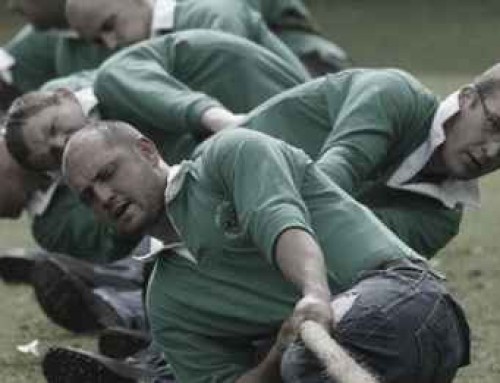By John J. Murphy
During this epic time of uncertainty, adversity, and the “Great Resignation,” it is wise to ask oneself, “What can I do to step up my performance and meet these challenges successfully?” What would a sensible and proactive leader do? How do highly effective people manage these challenges with poise, confidence, and grace?”
The 8 Take-Aways:
Here are eight “take-aways” my clients find very helpful, both personally and professionally. I use the term take-away to summarize each lesson succinctly, and I emphasize the word take as a reminder that we do not need permission to do this.
1. Take ownership
Often, when the going gets tough and things seem to go wrong, people point a finger and cast blame on some external factor for their struggles. “It’s the pandemic causing my problems.” “No, it’s the boss or an annoying co-worker or a disruptive situation at home.” In other words, it is something “outside myself” that is causing me grief and discontent.
Taking ownership challenges these assumptions and reminds us that Y (our outcomes) is a function of X (our inputs or the “seeds” we sow). Y = f(X). In Algebra and Statistics, this law is known as the Transfer Function. Therefore, mindful leaders pay close attention to the inputs leading to the outputs.
Think of this like baking apple pies. If you want tasty, consistent, predictable pies, you must manage and control the inputs. This includes the ingredients, the process, the oven, the oven temperature, and the amount of time in the oven. Any variation on the inputs will propagate into a change in outputs.
The same is true for people. Our “inputs,” including what we think and do, lead to our outcomes–our results. We reap what we sow. Therefore, we must accept responsibility for whatever we experience in life, and we must recognize that it is not the external factor that annoys us. It is what we think energetically of the external factor. This translates into taking charge of our thoughts and attitudes and feelings. It means making positive commitments, getting involved, setting a good example, and being accountable for our choices. Mindful leaders take ownership.
2. Take notes
This “take-away” challenges us to keep an open mind, pay attention and commit to lifelong learning. Think of everything going on in your life as a lesson and you are a student. Ask yourself, what can I learn from this? Who can I talk to or learn from who has experience and wisdom with this situation? Be mindful of who you ask and who you listen to. There are many people willing to offer direction to places they have never been. There are also abundant resources who are true experts available to us at the click of a button. Note that competence matters. Take ownership for learning and growing, and take notes from wise resources.
3. Take a good, honest look in the mirror
Henry Ford once said, “Whether you think you can or you think you can’t, you’re right.” Stop and ask yourself what you think–about yourself, your circumstances, your potential, and your future. Look into your own eyes when you do this. What image do you see? Is it promising and bright? Do you see the possibilities and opportunities that are surrounding you? Recognize that every crisis is an opportunity in disguise.
Problems and solutions are two sides of the same coin. One cannot exist without the other. So, what side of the coin do you dwell on? Hope and promise, or misery and despair? Is your thinking aligned with the problem or the solution? Mindful leaders are optimists. We look for and find the silver linings with an open and creative mind, often uncovering them in the darkest places. As Lao Tzu wrote in the Tao Te Ching, “Suffering brings perfection.”
4. Take time
How often do you hear people use time as an excuse for not getting something important done? Do you sometimes say or think this? Now consider that we all have 24 hours in a day. What we do with these hours matters. Our priorities, choices, and activities are pivotal inputs to any desired outputs we seek. Take time right now to consider a few desired results you want to experience in your life – including physical, mental, emotional, social, financial, professional, and spiritual. Now consider how much time you are committing to manifest these desired outcomes. Chances are, you might want to make a few adjustments to the seeds you are sowing. People often confuse activity with productivity. Activity is simply busywork, taking up time. Productivity is activity advancing you toward your goals.
5. Take measure
Peter Drucker once said, “What gets measured gets improved.” Take time to measure what is important to you, the critical Y factors in your life. For example, if inner peace matters to you, are you getting stressed a lot? How often? By what? Get the facts and data. You can do the same thing with your physical health, financial condition, and social wellbeing. Know the score. If you want to gain credibility and influence as a leader, it is essential to know where you are and what is going on. Mindful leaders use good intelligence to focus, align, and mobilize people and productive activity. If you are serious about stepping up, start by establishing a factual baseline for moving forward.
6. Take a chance
T.S. Eliot wrote, “Only those who will risk going too far can possibly find out how far one can go.” Taking chances means accepting that risk is intrinsic with reward. Every successful entrepreneur and mindful leader understands this principle. Of course, taking a chance does not suggest being careless. On the contrary, thoughtful risk mitigation and management go hand in hand with bold, proactive, innovative action. Mindful leaders use tools like FMEA (Failure Mode and Effects Analysis) to evaluate risk and identify ways to mitigate it. A simple FMEA requires three questions to contemplate and answer:
- What could go wrong?
- How serious and likely is this risk?
- What can we do now to mitigate or avoid it?
7. Take another look
In the military, there is a term called AAR or After-Action Review. Athletes, actors, speakers, and mindful leaders use a similar process for reviewing results and adjusting, often using video replay to carefully critique performance. My clients use AARs and video replay to gain a better understanding of process flow and to identify improvement ideas.
It is remarkable to see what we see when we step up, step back, and take the time to examine our processes and performance. If you are not already doing so, use AARs to find ways to improve your outcomes. This applies to job interviews, meeting management, presentations, and any task that can be reviewed. A simple AAR asks, what went well? What did not go well, and why did it not go well? And what adjustments can I make to do better the next time?
8. Take a knee
The phrase “take a knee” can mean many things. In sports, it means we need to talk. Listen up. We need to go over something important. It may also accompany a marriage proposal, a prayer, or the knighting of someone. In the context of mindful leadership, it means serving with humility, honor, appreciation, and gratitude. Truly successful people give credit where credit is due. We look for ways to make other people feel and look good. We treat one another with dignity, patience, and respect. We value diversity and give thanks for the opportunities we have. During dark and difficult times, we find reasons to be grateful and humbly shine light for others to see.
Socrates wrote, “The unexamined life is not worth living.” These eight take-aways offer guidance on how to examine one’s life and experiences. Use them to learn, to grow, to pivot, and to prosper as you are meant to. This is your essence. Life is a journey with many twists and turns, but only one direction. That direction is forward.
John J. Murphy, the CEO of Venture Management Consultants, Inc., is an author, speaker, entrepreneur, business consultant, and coach and has been for over 30 years. He has trained thousands of organizational leaders from dozens of countries around the world.






Leave A Comment